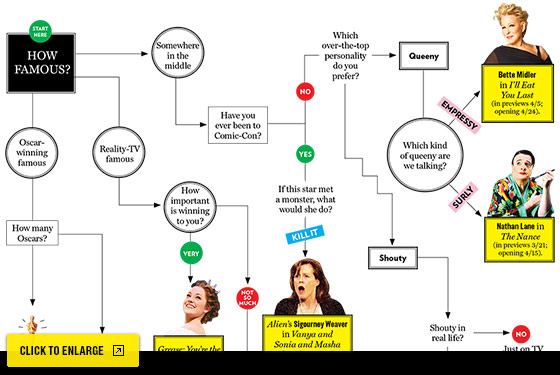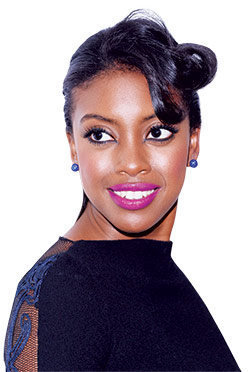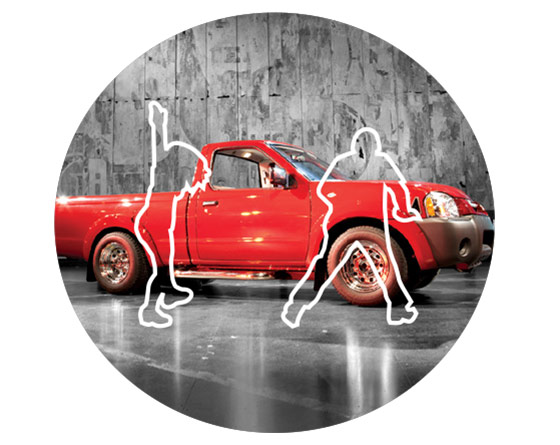1. Which Star-Driven Show Is Right for You?
With so many famous people treading so many boards—from the pairing of Tom Hanks and a funny mustache in Lucky Guy to the engineering (and then breakup) of Alec Baldwin and Shia LaBeouf in Orphans—it’s hard to know which famous name to spend $200 on. Here, a flowchart to guide you.

Photographs: Jonathan Pushnik (Midler); Carol Rosegg (Osnes); Jason Bell (Clarke); Charles Erickson (Weaver); Patrick McMullan (remaining)
2. Rant: A Frustrated Producer on Broadway’s Hollywood Rut
Broadway is broken. The theater has been like a bad episode of Smash (see Bono throwing Julie Taymor under the bus). Stars are cast for commercial value, and some agents say, “No audition, offer only.” They say, “Oh, but they’re so established in the movies.” But what I’ve seen over the years is that just because someone is fantastic onscreen doesn’t mean they’re ready for the stage. Look at Ben Stiller in The House of Blue Leaves, or Katie Holmes in Dead Accounts. (Though Dead Accounts was bad by all accounts.) Art and artistry are being driven out—hence empty houses, or avant-garde shows in prime houses. Rob Ashford’s idea for Cat on a Hot Tin Roof was to have ghosts of characters onstage, but his vision wasn’t supported, which is pretty fucked up. We need to support the visionaries. Otherwise, we’re chefs working in a kitchen with the same nine ingredients. —As told to Jennifer Vineyard
3. The Next Stage-to-Screen Star

Condola Rashad, daughter of Phylicia, The Trip to Bountiful co-star, and acting-powerhouse-in-search-of-outlet.
First in Lynn Nottage’s Ruined (in which she played a victim of rape and mutilation in Congo) and then again in Lydia R. Diamond’s Stick Fly (as a working-class teenager who learns the dark secret of her parentage), Condola Rashad has shown mastery of two great assets: patience and focus. She can play deep pain without squirming, leaving that to her audience. She can play high dudgeon at low entropy—a rarity in an art form that too often rewards histrionics over sincerity. And she can dive deep inside character and stay right with us—uncomfortably close, in fact. That’s a precious commodity in her field. Holding a room with a look isn’t the same as holding a screen, which is why there’s so little crossover from stage to film. But with her economy and intensity, Rashad could play any movie lead she wanted (there’s a hint of early Angelina Jolie about her), though she’d be best deployed in a complex, ambiguous role. Who’s writing anti-heroines for black women these days? Whoever you are, here’s your muse. She can level with us. And then level us. —Scott Brown
4. Hands on a Hardbody’s Star Vehicle
In a play about ten people competing to win a truck, the truck itself is perhaps the most important, and certainly the biggest, character onstage. Here, a closer look.

Set designer Christine Jones wanted the truck to feel larger than life, which meant it had to always look as good as new. “Mike Pilipski, our props person, has spent so many hours polishing this truck,” she says. “It’s a sexy beast at this point.”
To give the truck movement, stage-vehicle manufacturer Tim Figgatt gutted the inside; it’s mounted on casters and a hydraulic lift, allowing the truck to rise half an inch off the ground, spin, and glide side to side.
The truck is a Nissan, just like the truck in the documentary the show is based on, and a 2001 model (more-recent trucks are just too huge to work onstage). “It’s kind of an Everyman’s truck,” Jones says.
Director Neil Pepe’s challenge: figuring out how to keep the characters visible to the audience when they’re circled around the truck. “There were a lot of discussions about what angle the truck should be at for specific scenes,” he says. “There’s always somebody on the upstage end of the truck. Sometimes you can see someone through the windows, which is cool.” —Rebecca Milzoff
(In previews for a March 21 opening.)
5. Backup at Tiffany’s: Meet Emilia Clarke’s Plan B
Elisabeth Anthony Gray on being the lead’s understudy.
By Jennifer Vineyard

Are you worried that the crowd would be disappointed if you ever end up fulfilling your duties?
I don’t know! [Laughs.] I mean, sometimes when they announce it’s an understudy, you hear the audience groan in misery. But Holly Golightly really lends itself to winning people over, as a character. But I made Emilia swear a pinkie blood oath that she is going to go on every night.
Well, she might have Game of Thrones promotional duties—but audience members will be eager to see the Khaleesi.
What are they going to do if they’re upset, shoot us with a bow and arrow?
Since people will be comparing Emilia to Audrey Hepburn, does that mean they’ll compare you to both?
Well, I don’t look like Emilia Clarke—she’s five-two; I’m five-nine—so there’s that. I can do an Audrey impression: “Dahling, I lost the goddamn key!” But that’s not the role. Emilia has her own take on Holly—especially when it comes to the bathtub scene.
You also have a mockumentary web series launching called Understudies.
I play a buffoon version of myself, in the tradition of Ricky Gervais’s Extras. It’s a day in the life of an understudy who refuses to do musical theater because of her mommy issues, and she’s doing a vampire parody of a successful Broadway show. Maybe Emilia will do a cameo. (In previews March 4; opening March 20.)